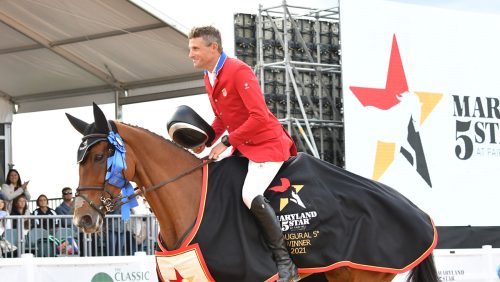I’m afraid the recent temporary bans imposed by the Fédération Equestre Internationale, British Eventing and the U.S. Equestrian Federation on helmet-mounted cameras is bound to remain indefinitely at the detriment of all horse sports.
Before stepping into the argument, I want to give you some background about me as well as the topic at hand. I have a unique perspective on helmet cameras and their impact. Before micro-cameras were commercially available, I designed the first system used on NBC’s broadcast at Rolex Kentucky CCI**** in 2005 and I have been actively involved ever since.
I have a degree in Mechanical Engineering and have ridden and used helmet cameras through the CCI**** level of eventing as well as in grand prix show jumping. A number of these rides have been uploaded to YouTube and have totaled over a million views so far, from every continent in the world.
Here’s my 2012 Rolex Kentucky CCI**** ride on Running Order, with voice-over analysis…
And here’s one of my grand prix show jumping rounds, from this year’s HITS Ocala (Fla.) on Courage…
ADVERTISEMENT
That works out to just under 750 views and over 50 hours of footage every day!
I am just one of hundreds of riders from all disciplines who have chosen to share our experiences with others via helmet cameras. Unlike all major league sports, the equestrian disciplines have obstacles to entry. The average member of the public will never be lucky enough to ride, much less compete a horse. The only way to garner further support is to have ability draw people into the story that we are lucky enough to live—to give them the best approximation of what if feels like to gallop and jump.
A third-person point of view, in this day and age, is simply insufficient. I believe along with live feed/quick reporting video, helmet cameras have had a big part in a multi-media revolution that has opened our sports to the public at large. It’s obvious while turning on the evening television that I’m not alone. Just about every popular sport to date has strategic POV cameras used during broadcast.
Here’s my Samur CCI**** cross-country round earlier this year on Crown Talisman…
ADVERTISEMENT
Why has this ban been implemented? The FEI, USEF and British Eventing have decided to restrict the use of helmet cameras based on a now recanted French journalist’s assessment of racecar driver Michael Schumacher’s skiing accident, which left him in a coma.
I have read some reports that it’s possible that Michael made the critical error of physically screwing the helmet camera mount into the outer shell of the helmet. Upon impact this causes an obvious stress concentration in the shell leading to a premature fracture. Whether it would have changed the outcome of his crash, many will speculate, but no one will ever know for sure.
That said, every commercially available mini-camera unit is sold with double-sided tape, which upon impact would dislodge. Moreover, there are a number of other physical camera designs that in my opinion are much safer due to their diminutive size, weight and placement on the helmet.
I would be naive to overlook the legal implications on which this decision is predicated. From the federation lawyers’ perspective, their livelihood would be on the line if they didn’t take the most conservative route and someone decided to file suit. As for any other risky activity, including riding horses, I see no reason a liability waiver couldn’t be drafted that would protect the federations’ interests and allow riders free choice to use cameras.
The most common sense reaction I’ve seen yet came from Eventing New Zealand: “ESNZ Eventing will be closely observing developments and will advise immediately there is any change. Riders are reminded they are solely responsible for their safety. Any camera mounted on a helmet MUST be in such a way that it will easily detach in the event of a fall. Officials have a duty to ensure that cameras will detach and to remove any cameras they consider to be dangerous before the start of competition.”
I hope that ESNZ’s policy will prove to be a model for our collective sport to follow. Without it, we’re doomed to stagnate.
Doug Payne is a professional event rider operating out of his Doug Payne Equestrian in Apex, N.C. You can read all his blogs here.















